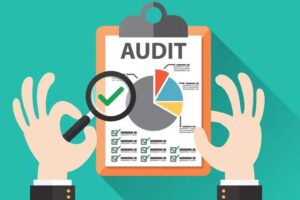Energy Isolation: Plan, Procedure and Checklist
Course Fee:
Upon completing this Energy Isolation: Plan, Procedure and Checklist course successfully, participants will be able to:
• Recognise common energy hazards
• Become familiar with the principals of energy isolation
• Distinguish between primary isolation practices versus positive isolation practices
• Gain a basic understanding of the various energy sources
• Establish a basic awareness of energy isolation procedures, standards, and practices
• Comprehend common terminology related to isolations and control
• Identify where and when the different pieces of equipment used in positive isolation should be utilised
• Identify the hazards pertaining to loss of containment and personal injury
• Define the roles and responsibilities of achieving safe and reliable process isolation
• Plan and conduct risk assessment processes effectively
Course Content
ENERGY, LEGISLATIVE REQUIREMENTS AND CODES OF PRACTICE
• What is Energy?
• Common Energy Sources
• OSHA requirements and Electricity at Work Regulations
• Procedures, Standards and Approved Codes of Practice
ENERGY ISOLATION PROCEDURE SCOPE, PURPOSE, AND AUTHORITY
• Introduction to Energy Control Procedures
• Scope
• Purpose
• Authority
• Periodic Inspections
• Employee Training and Retraining
SAFE SYSTEMS OF WORK, ELECTRICAL ISOLATION AND LOTO
• Introduction to Energy Isolation (Electrical)
• Safe Systems of Work
• Safe Working Practices
• Electrical Isolations and Techniques
• LOTO Requirements
• Earthing Requirements for Isolation
• Problems Associated with Electrical Isolation
DOCUMENTATION, INSTRUMENTATION, CONTROL AND ASSOCIATED MECHANICAL SYSTEMS
• Isolation Confirmation Certificates
• Introduction to Energy Isolation (Instrumentation)
• Instrument Isolation Techniques
• Intrinsically Safe Systems and Dangers Associated with Intrinsic Safety
• Safe Systems of Work
• ELV isolation for Instrument energy sources
• ‘Block and Bleed’ Techniques
• Isolation of Instrument Piping
• Isolation of Devices & Plans Used in Process Control
• Issues/problems associated with Instrumentation Isolation
• Energy Control Procedures – Documentation Exceptions
MECHANICAL SYSTEMS, HYDRAULICS, PNEUMATICS AND POTENTIALLY EXPLOSIVE ENERGY
• Introduction to Mechanical Energy Isolation
• Safe Systems of Work and Secure Working Practices
• Mechanical Isolation Techniques
• Valves, Gearboxes and Motors
• Piping, Pipe Flanges and Joints
• Hydraulic and Pneumatic Isolation
• Issues/problems associated with Mechanical Isolation
• Introduction to Potentially Explosive Atmospheres
• Standards and Good practices
POTENTIALLY EXPLOSIVE ENERGY AND CONCEPTS
• Safe Working Practices
• Overview of Potential Electrical Energy Release Risks
• Overview of Potential Instrument Energy Release Risks
• Overview of Potential Mechanical Energy Release Risks
• Ignition Energy Assessment of Oil & Gas Operations
• Overview of Equipment concepts
ROLES & RESPONSIBILITIES
• Owner Departments
• Principle Investigator / Project Supervisor / Supervisor
• Faculty, Staff, and any Affected Person
• Qualified Person
• Capital Projects / Construction Project Manager
• Contractors and Joint Projects
• Outside Personnel (Contractors)
• Group Lockout/Tagout Requirements
• Periodic Inspection
• EH&S/General Safety
• Employee Training and Communication
• Additional Training
• Shift & Personnel Changes
Methodology
The training methodology integrates lectures, interactive discussions, collaborative group exercises, and illustrative examples. Participants will acquire a blend of theoretical insights and hands-on practical experience, emphasizing the application of learned techniques. This approach ensures that attendees return to their professional environments equipped with both the competence and self-assurance to effectively implement the acquired skills in their responsibilities.
DATE:
1ST BATCH: 25th – 28th Feb, 2025
2ND BATCH: 5th – 8th Aug, 2025
Course Category
- Human Resource and Admin
- Finance and Accounting
- Internal Audit and Fraud Control
- Stores, Procurement and Supply Chain
- Information Technology
- Aviation and Maritime
- Banking, Investment and Insurance
- Business Communication
- Construction Management & Civil Engineering
- Engineering, Instrumentation and Maintenance
- Entrepreneurship and Business
- Hotel & Hospitality Management
- Law and Contract Management
- Management and Leadership
- Project Management
- Public Relations
- Public Sector
- Sales, Marketing & Customer Service
- Secretaries & Personal Assistants
- Transport & Logistics
- Security and Safety
More Courses
VENUE
25, Queen street, Alagomeji Bus Stop, Yaba, Lagos










